SCENE ONE
Sadko finds himself at the feast in a rich house of the Novgorod merchants’s guild. Guild leaders order a song in praise of heroic deeds. Nezhata, a young guslar, sings for them. Unable to hold his tongue at the table, Sadko admonishes the merchants for their clinging to the antique traditions and vain boasting. Affronted by Sadko’s accusations, the merchants angrily banish him from the feast.
SCENE TWO
Sadko comes to the shore of Lake Ilmen. Surprised to see a beautiful girl appear there, he desperately tries to find out her identity. The girl reveals her secret to him: she is Princess Volkhova, the youngest daughter of the Sea Tsar and Tsarina Hydraqua. Her beauty enchants Sadko into total oblivion. Volkhova promises to help Sadko and tells him about the three magic goldfishes he will capture once he goes fishing in Lake Ilmen with his net. These fishes will make Sadko rich and prosperous.
SCENE THREE
Sadko arrives at his wife’s, Lubava Buslaevna. She has waited for him all night long and rushes to embrace him, but he turns her down. Sadko has made up his mind to go to the harbour and make a bet that there are three goldfishes in Lake Ilmen.
SCENE FOUR
The harbour of Novgorod hosts a boisterous market. Sadko challenges the guild leaders to bet there is goldfish in Lake Ilmen. The guild leaders mock him, so he raises the stakes and bets his life against all the guildsmen’s wares. The leaders take the bet. Sadko casts his net, the crowd impatiently anticipating the result. Volkhova’s promise is fulfilled: three living goldfishes are agonizing in Sadko’s net, eventually turning into pure gold. Sadko is rich now and subject to everyone’s praises. Exalted, Sadko decides to summon a band of brave men and equip ships. He asks foreign merchants to tell him about the distant lands to choose where to set sail to.
SCENE FIVE
Sadko is in despair. Before his eyes there are hopeless scenes of his ship standing still in the high seas and his men throwing barrels of gold, silver, and pearls overboard as a toll to the Sea Tsar so that he would release the ship to join the rest of the fleet. Sadko supposes the Sea Tsar is up to a human sacrifice and suggests that they should cast lots to choose a victim to be drowned. The band agrees, and the lot is drawn by Sadko himself. Solemnly heading to his death, Sadko suddenly hears Volkhova’s voice.
SCENE SIX
Sadko and Volkhova are in the underwater realm before the Sea Tsar and Tsarina Hydraqua. The Tsar orders Sadko to sing a glorifying song, and the singing is so much to his taste that he offers Sadko to stay for good and marry Volkhova. Sadko plays his gusli, and the seafolk dance frantically. Amidst the celebrations Vision the old mighty warrior appears and stops the dance, ordering the Sea Tsar to let Volkhova go away with Sadko.
SCENE SEVEN
Sadko is asleep to the sound of Volkhova’s lullaby. Volkhova bids him farewell forever. Awake, all Sadko can hear is Lubava’s wailing. Everyone gathers to greet Sadko.
Dmitri Tcherniakov
(Note: Instead of traditional acts, Sadko is divided in seven scenes, and, as that type of structure would suggest, is more loosely constructed than a traditional opera. The opera is usually performed in three or five acts, depending on how the scenes are grouped: Three acts – 1–2, 3–4, 5–6–7 or 1–2–3, 4, 5–6–7: Five acts – 1, 2–3, 4, 5–6, 7)
Time: The historical figure Sadko lived in the 12th century.
Place: The action takes place in Novgorod and in the legendary realm of the Sea-King.
The opera tells the story of Sadko, a gusli player (guslar), who leaves his wife, Lubava, and home in Novgorod and eventually returns a wealthy man. During his years of travel he amasses a fortune, weds the daughter of the King and Queen of the Ocean and has other adventures. Upon his return, the city and Lubava rejoice.
Scene 1 – The rich mansion of a guild in Novgorod
The wealthy Novgorod merchants congratulate themselves on their prosperity. Nezhata, a gusli player from Kiev, sings an heroic song. In reply, Sadko also sings, but the merchants laugh at him when he suggests that Novgorod would be more prosperous if a river joined Lake Ilmen to the ocean.
Scene 2 – The shores of Lake Ilmen
Sadko wanders unhappily by the lakeside. His singing attracts some swans, one of which changes into Volkhova, the Sea Princess, who wishes to marry a mortal. She explains to Sadko how to catch three golden fish which will lead to his fortune after a long voyage. The Princess promises to him to wait patiently for his return. At dawn, from the lake the voice of the Sea-King is heard. He calls his daughters home into the depths. The girls once again turn into white swans and swim away into the distance.
Scene 3 – An attic in Sadko's home (in Novgorod)
Sadko's wife, Lubava, is missing her husband. She is happy when he comes home at last, but distressed when he announces his intention to leave immediately in order to seek his fortune.
Scene 4 – A pier in Novgorod (on the banks of Lake Ilmen)
Merchants assemble at the quayside and Nezhata sings another gusli song. The merchants deride Sadko when he explains how he will win his fortune by catching three golden fish. Sadko bets them that he can do this, and, after he is successful in catching the fish, he wins their ships to take on his voyage. He sets about gathering a crew for his voyage. Three visiting merchants, a Viking, an Indian and a Venetian, sing in turn of their homelands. Sadko decides to set sail for Venice.
Scene 5 – A peaceful expanse of the ocean
Sadko's fleet of ships is returning home, laden with treasure, but becomes becalmed. Sadko's crew throw treasure over the side to propitiate the Sea-King, but no wind appears. Sadko is left behind, clinging to a log, when the wind suddenly picks up while he is overboard.
Scene 6 – In the depths of the sea
The scene shifts to the realm of the sea-king, where Sadko sings to the king and queen, winning the hand of their daughter, Volkhova. The wedding celebrations become so boisterous that a storm springs up, sinking ships on the surface of the sea, and the realm of the Sea-King is destroyed. The end of the reign of the pagan king is heralded by an apparition of a Christian pilgrim (actually St Nicholas of Mozhaysk) Sadko and Volkhova escape the destruction on a sea-shell.
Scene 7 – Novogrod, a green meadow on the shores of Lake Ilmen
Sadko is asleep by the lakeside. Volkhova watches over him and sings a lullaby. Before he wakes, she bids him farewell and then disappears, becoming changed into the River Volkhova that now links Lake Ilmen with the sea. Lubava finds her husband asleep and wakes him: he believes that his voyage was nothing but a dream, but the sight of the new river and his fleet of ships convinces him that he really is now a very wealthy man.


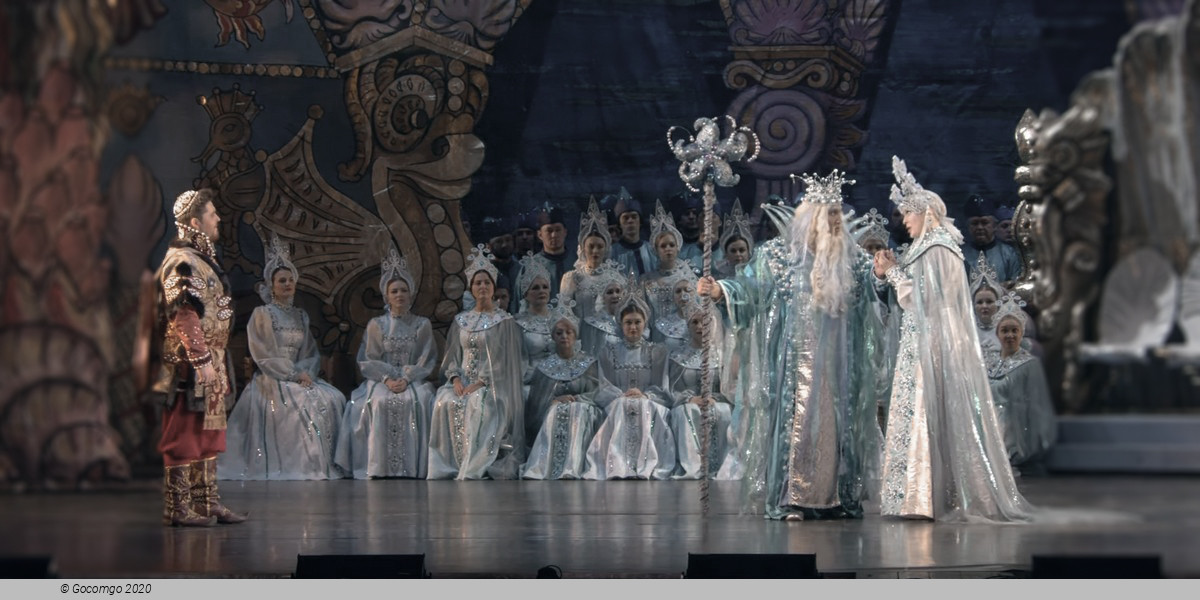
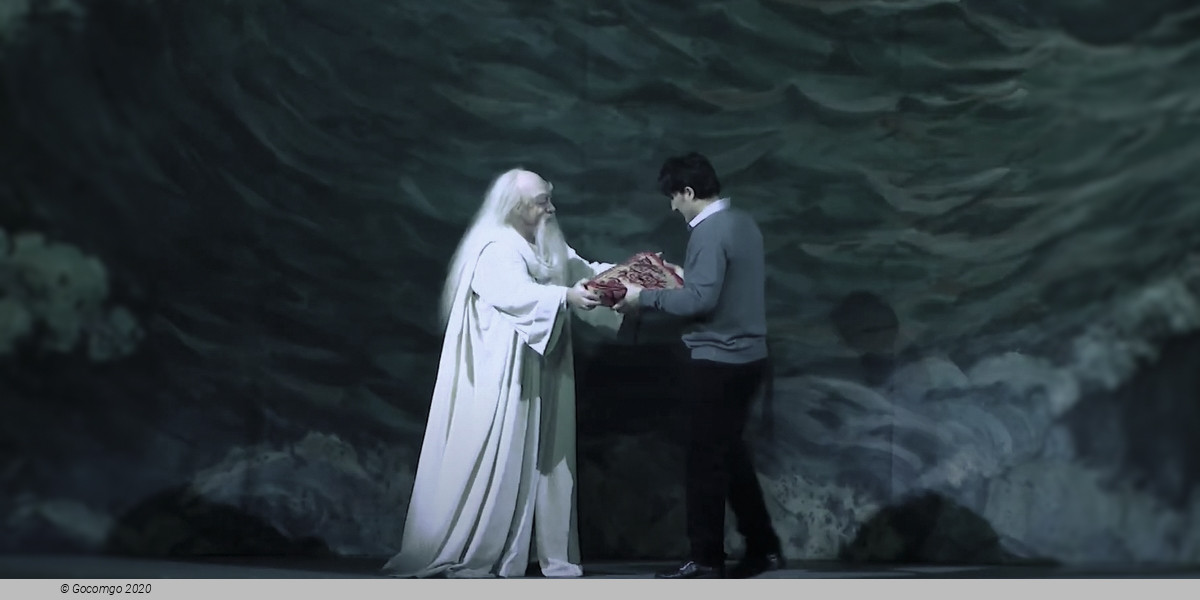
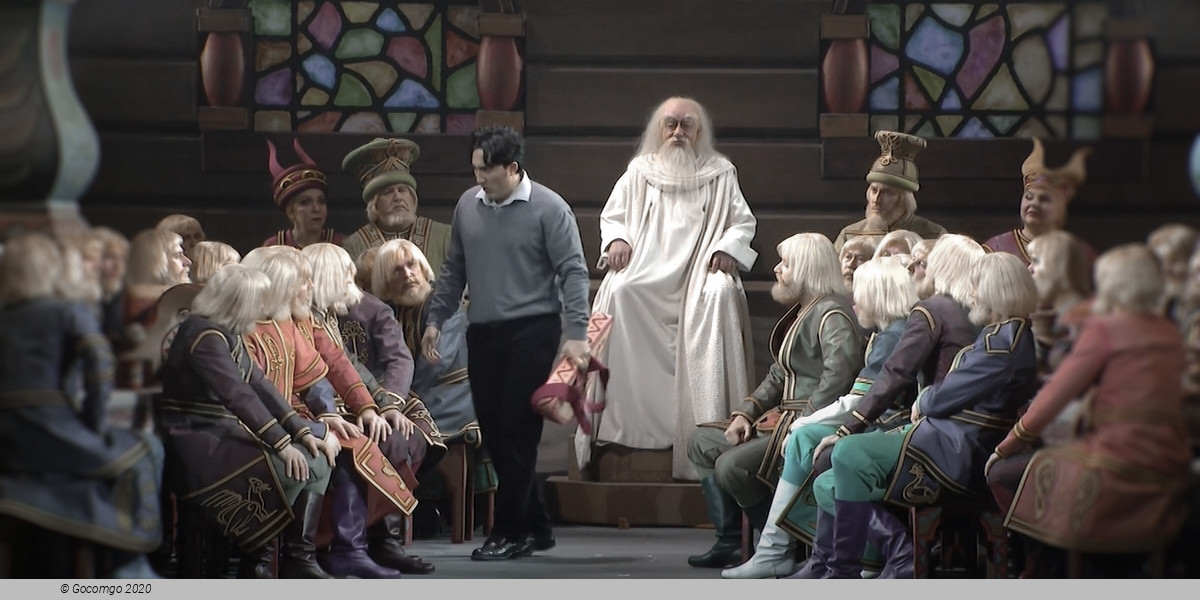
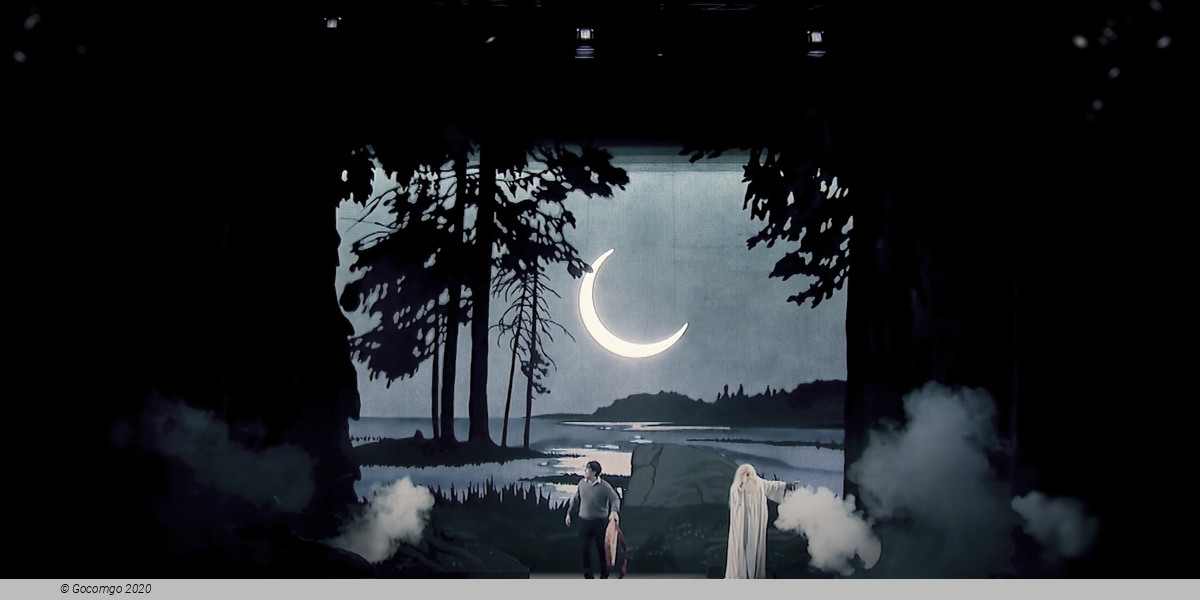
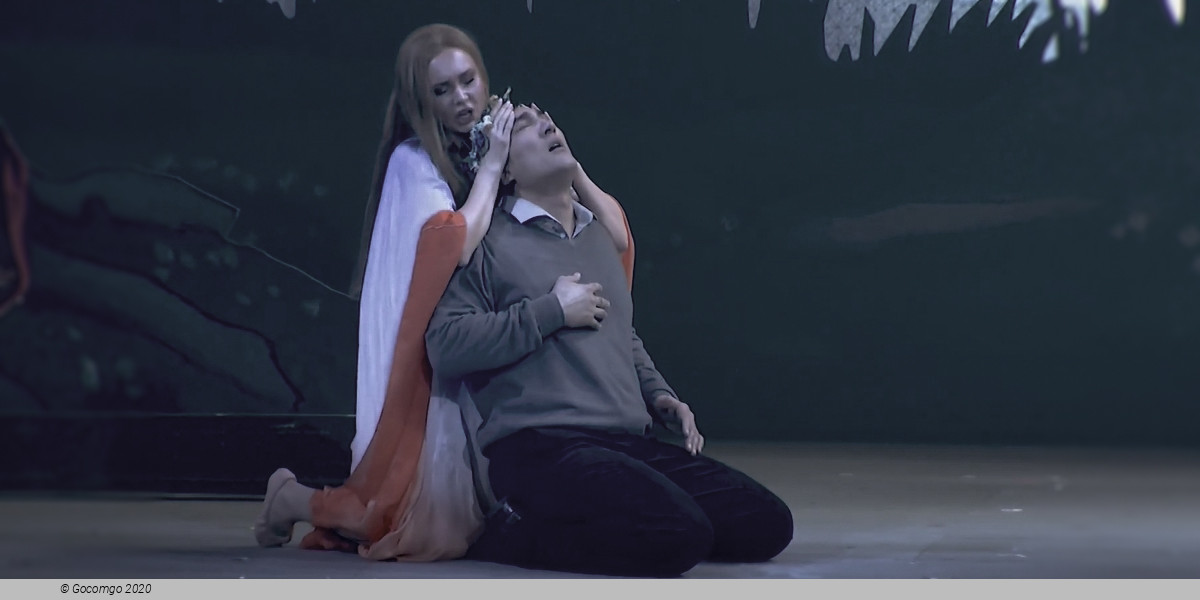
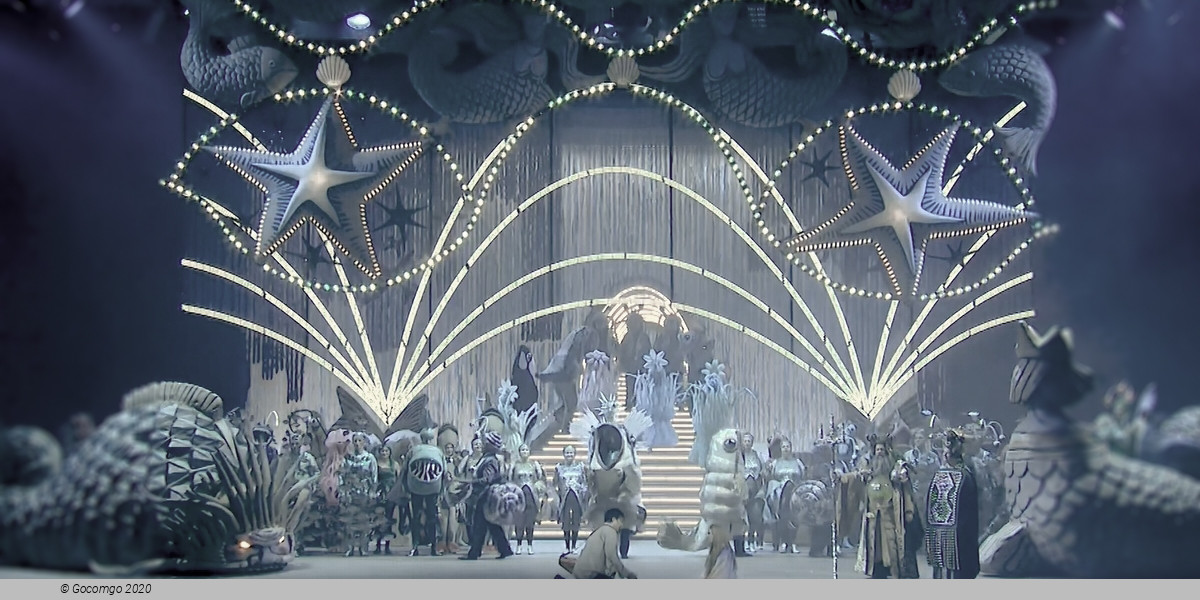
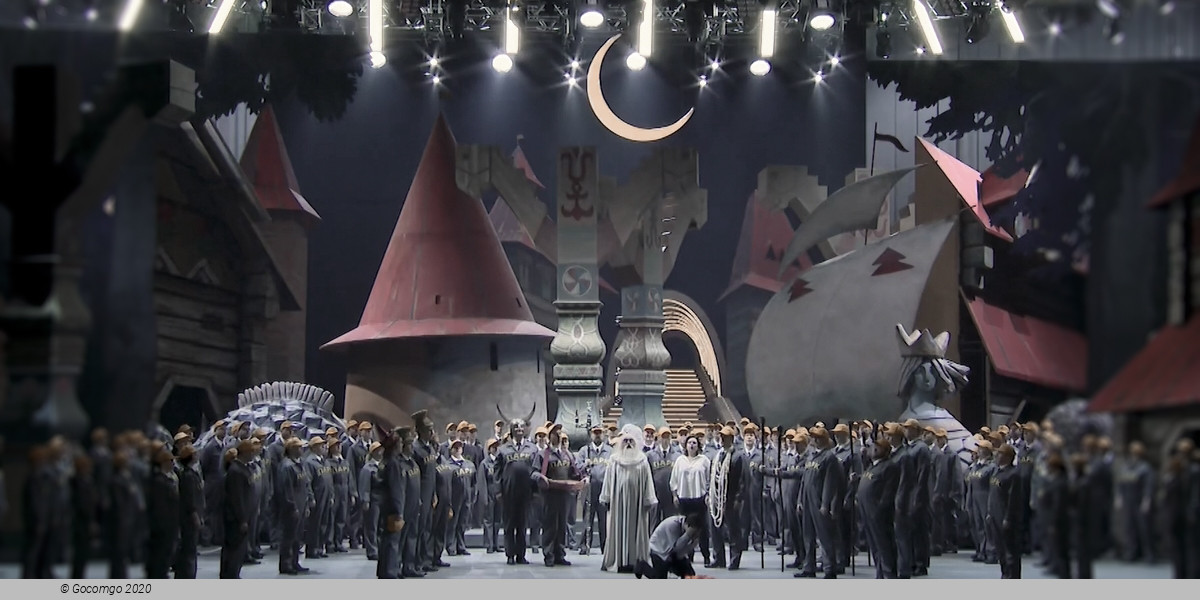
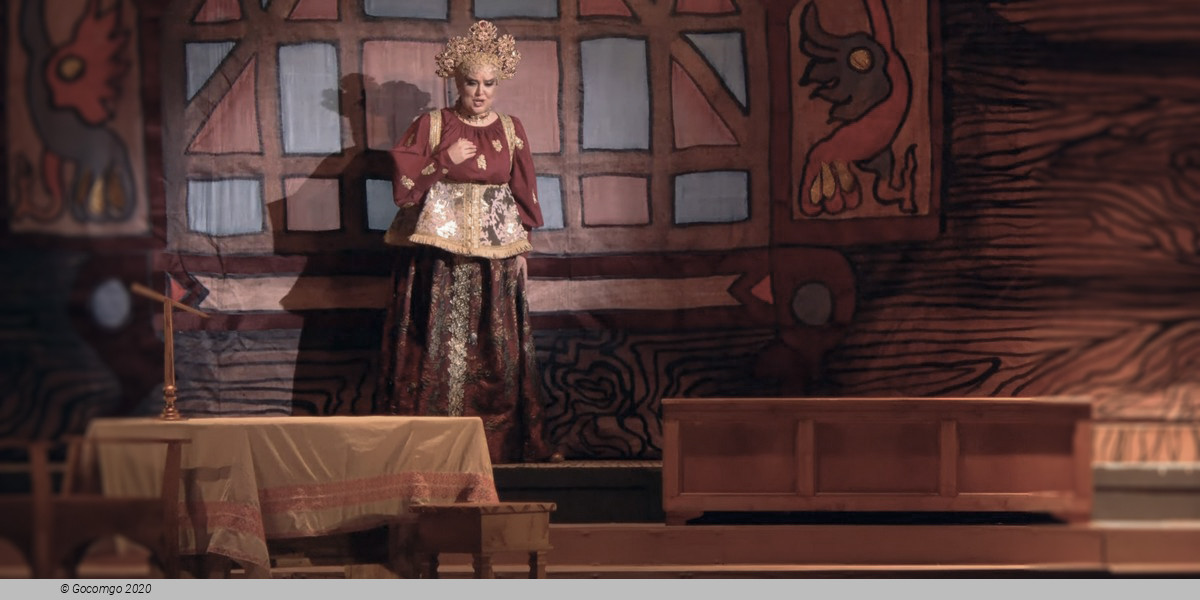
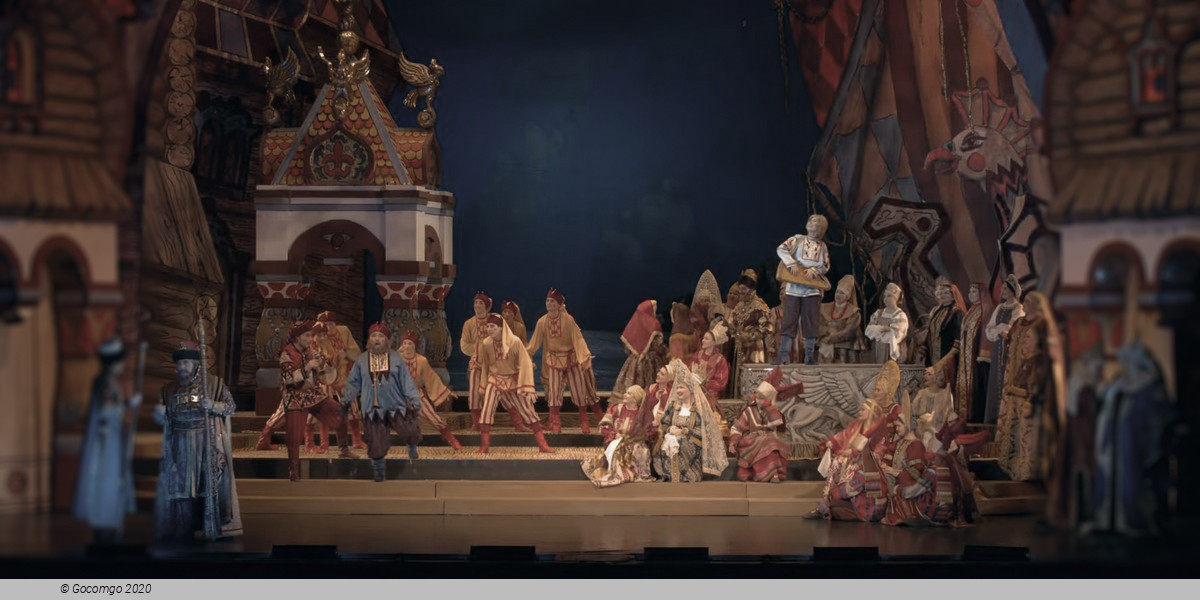
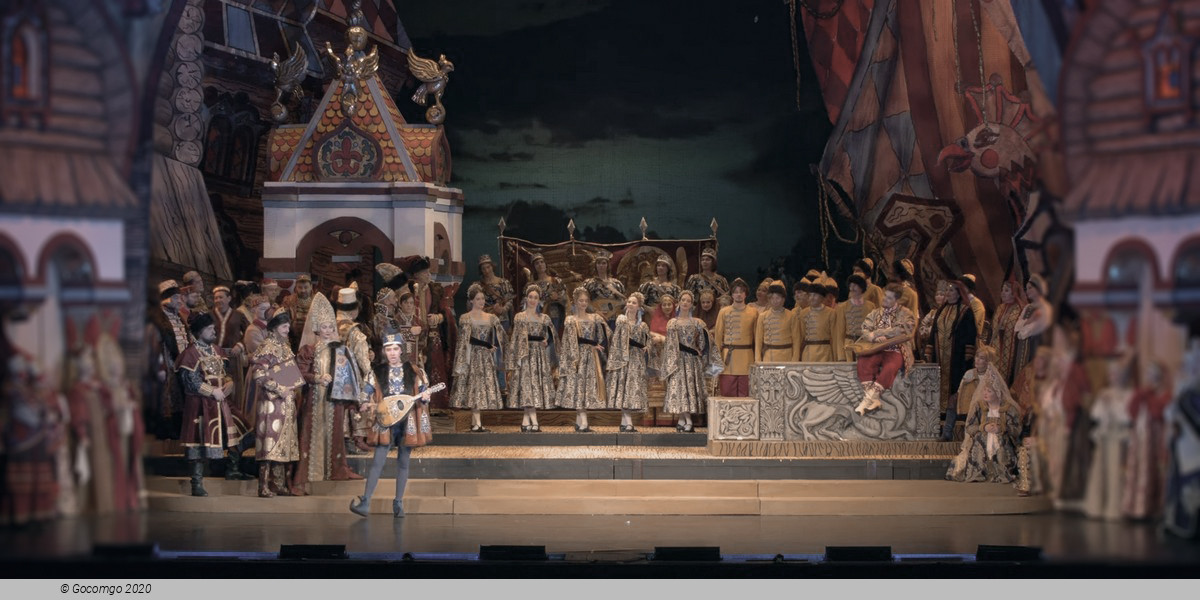
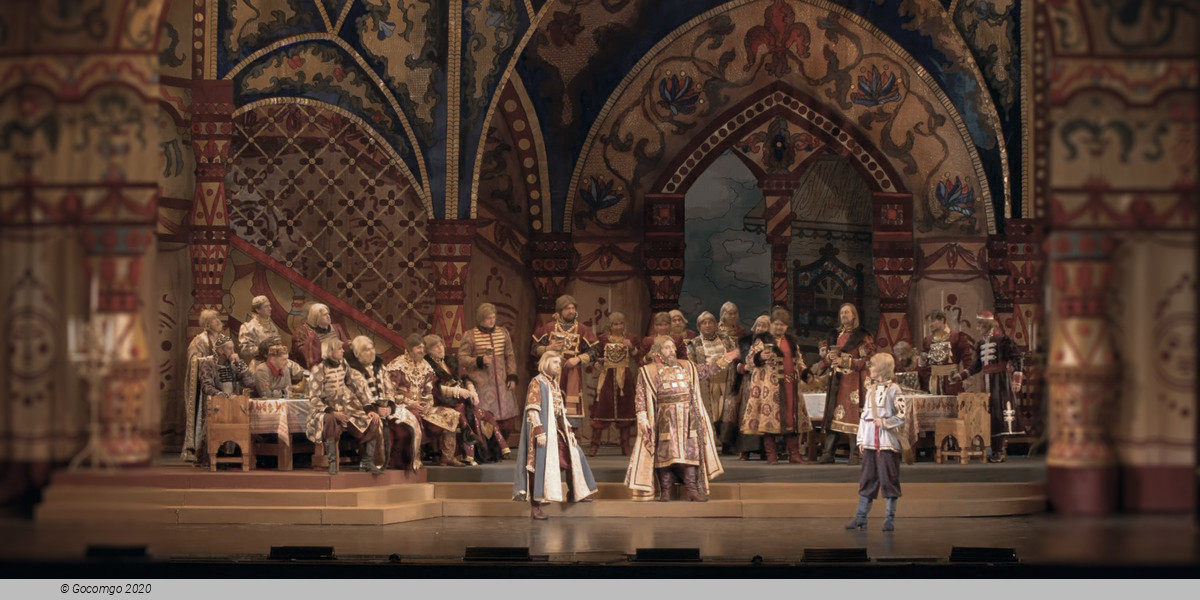
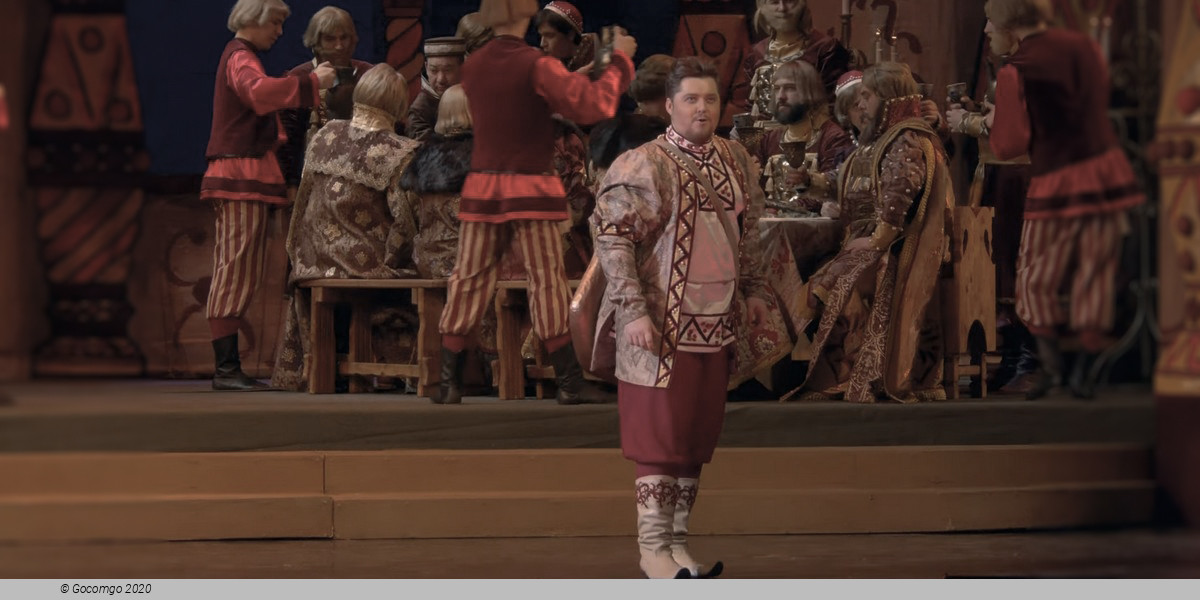
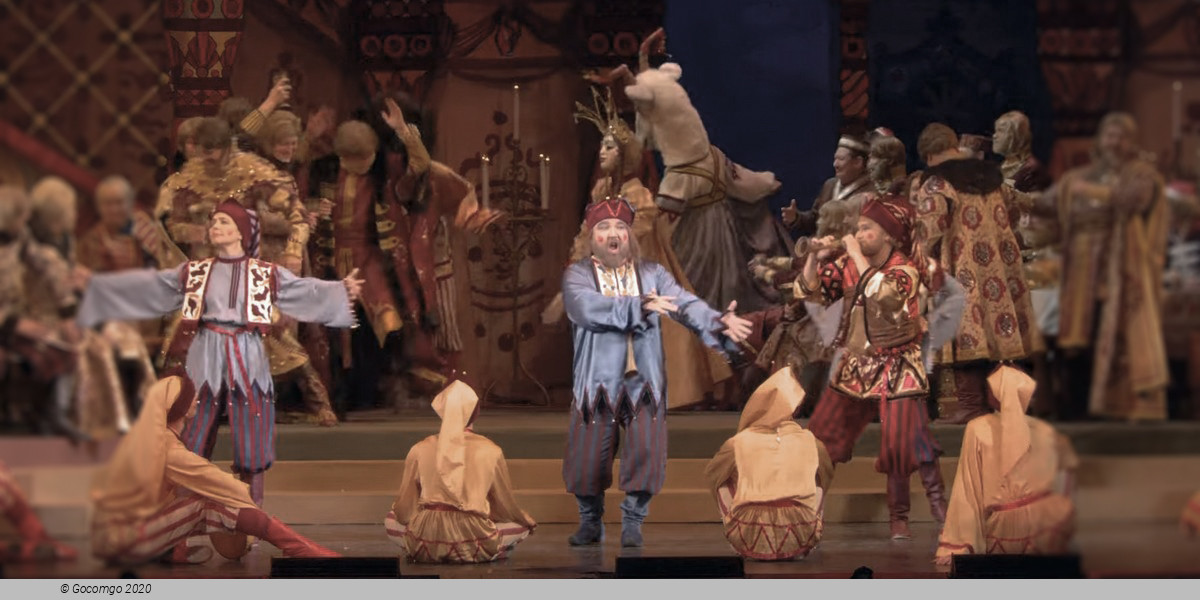


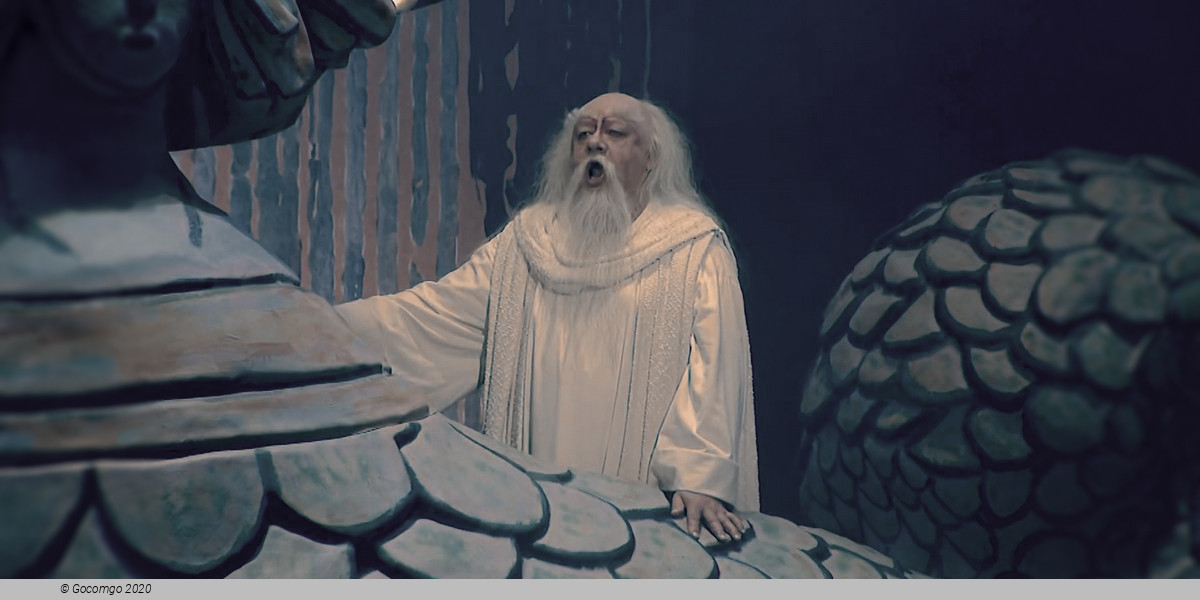
 Teatralnaya Square 1
Teatralnaya Square 1